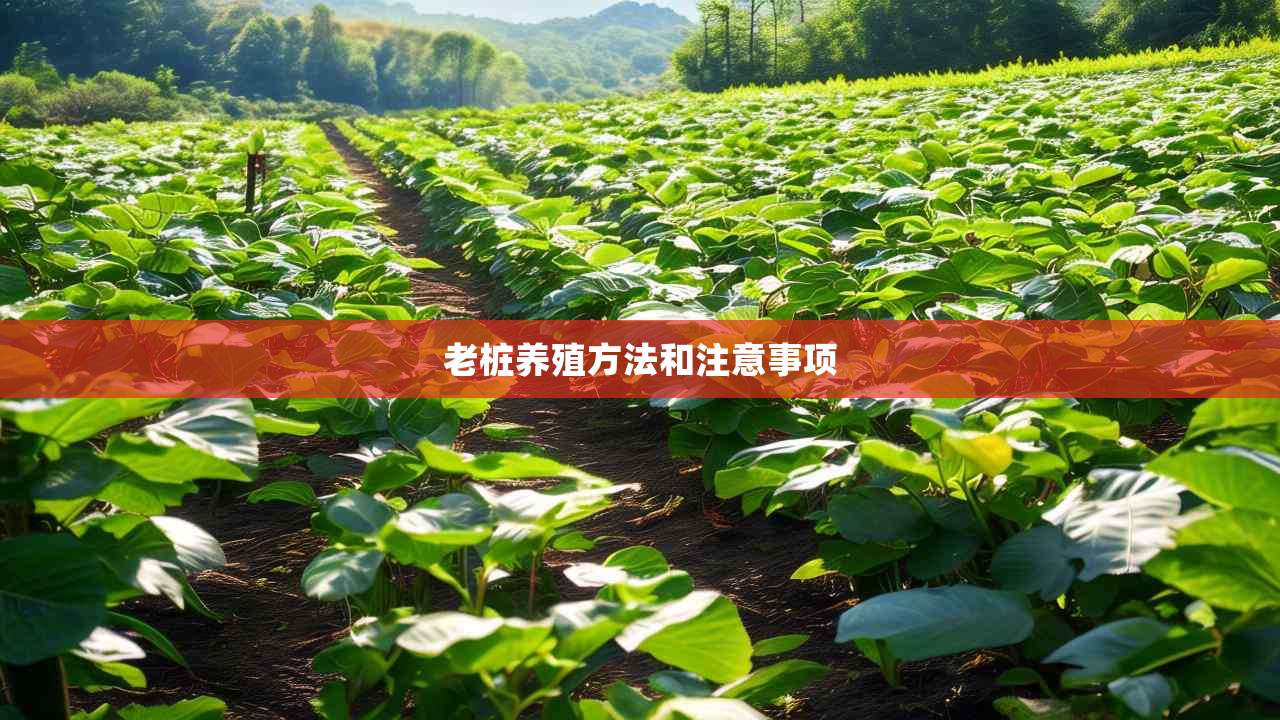养殖老桩是一种传统养殖方式,它是指将桩木埋入水中,让水体中的微生物附着在木桩上,为虾、鱼等水生动物提供食物和栖息环境。这种养殖方式经济效益高、环境友好、操作简单,因此受到了许多养殖者的青睐。下面将介绍一些养殖老桩的方法和注意事项。

一、养殖老桩的方法
1.选择合适的桩木:桩木的选取对养殖老桩起着至关重要的作用。一般来说,优质的桩木应该是硬质木材,不会腐烂,能够在水中长时间使用。常见的桩木有柳木、杨木等,可以根据当地的资源情况选择合适的种类。
2.安装桩木:在选择的养殖区域挖掘一个适当大小的坑,将桩木埋入坑中,并确保桩木的高度适中,一般是露出水面的一半左右。然后,填充坑洞,确保桩木的稳固性和水的稳定性。
3.调节水质:养殖老桩需要合适的水质条件才能顺利进行。一般来说,水质的PH值要适中,以养殖对象的需求为准。保持水体清洁,避免污染和有害物质的积累也是养殖老桩的重要环节。
4.合理饲养:根据养殖的具体对象,科学合理地进行饲养。对于养鱼,可根据品种及生长阶段提供合适的饲料,定期清理鱼缸和换水。对于养虾,可以提供虾饵或者鱼饵,定期清理虾池和换水。
二、养殖老桩的注意事项
1.防止感染病害:养殖老桩时要定期巡视,及时发现和处理病虫害,防止其扩散。这包括定期检查水体、观察养殖对象的体态和行为,及时发现异常情况。
2.管理养殖环境:尽可能保持水体的稳定性,避免水流过大或过小,避免剧烈温度变化等。在水体中添加一些有益微生物,帮助提高水质,促进养殖的顺利进行。
3.定期养护:养殖老桩需要定期养护,如修剪过长的水草,除去过多的杂草等。同时,要进行适当的清洁和消毒,保持水体的清洁和卫生。
综上所述,养殖老桩是一种简单有效的养殖方式,通过埋入桩木,提供食物和栖息环境,有助于水生动物的养殖。但是,在养殖过程中要注意合理选择桩木、调节水质、科学饲养、防止病害和定期养护等方面的问题。只有做到这些,才能够保证养殖老桩的成功。
除此之外,
Old stump cultivation, also known as stump culture, is a traditional and practical method of growing plants on old tree stumps. It is an innovative way to make use of old stumps and create a new and sustainable source of agricultural production. In this article, we will explore the old stump cultivation method and provide some important considerations for successful implementation.
The first step in old stump cultivation is to select a suitable stump. It is important to choose a stump that is relatively intact and not completely decayed. The stump should also be in an area that receives adequate sunlight and has a good drainage system. Additionally, make sure the stump is free from any harmful chemicals or pollutants that may affect plant growth.
Once the appropriate stump is selected, the next step is to prepare the stump for cultivation. This involves removing any loose or decaying bark from the stump surface. It is also necessary to flatten the top surface of the stump to ensure a stable platform for planting. This can be done by using a hatchet or a chisel. Additionally, creating small indentations or pockets in the stump can help hold water and nutrients for the plants.
After preparing the stump, it is time to choose the plants for cultivation. It is recommended to choose plant varieties that are suitable for the local climate and soil conditions. If you are unsure, consult with local agricultural experts or nursery owners for advice. Some popular plant options for old stump cultivation include ferns, mosses, small shrubs, and even certain types of flowers. These plants are often resilient and can adapt well to the unique growing environment provided by the stump.
When planting the selected plants, it is important to provide them with the right conditions for growth. Ensure that the planting holes in the stump are deep enough to accommodate the plant's root system. Place the plants in the holes and gently pack the surrounding soil to secure them in place. It is also crucial to water the plants regularly to keep the soil moist and provide the necessary nutrients for their growth. Pay attention to the specific watering requirements of each plant species to avoid over- or under-watering.
In addition to watering, it is important to provide the plants with proper care and maintenance. This includes regular pruning to remove dead or diseased parts of the plants, as well as controlling weeds that may compete for nutrients and sunlight. Fertilizing the plants can also be beneficial, but be cautious with the amount and type of fertilizer used to avoid over-nutrition or damage to the stump.
One of the key considerations in old stump cultivation is patience. It may take some time for the plants to establish their roots and grow vigorously. Be patient and give them time to adapt to their new growing environment. Monitor their growth regularly and make necessary adjustments as needed.
It is also important to be mindful of the overall aesthetic of the old stump cultivation. Consider how the plants will complement the natural features of the stump and the surrounding landscape. Add a touch of creativity by arranging different plant species in an aesthetically pleasing manner. This can create a visually striking focal point in your garden or outdoor space.
In conclusion, old stump cultivation is a traditional and effective method of growing plants on old tree stumps. By selecting a suitable stump, preparing it properly, and choosing the right plants, you can create a unique and sustainable source of agricultural production. Remember to provide the plants with proper care and be patient as they establish their roots and grow. With these considerations in mind, you can successfully implement old stump cultivation and enjoy the beauty and benefits it brings to your garden.
